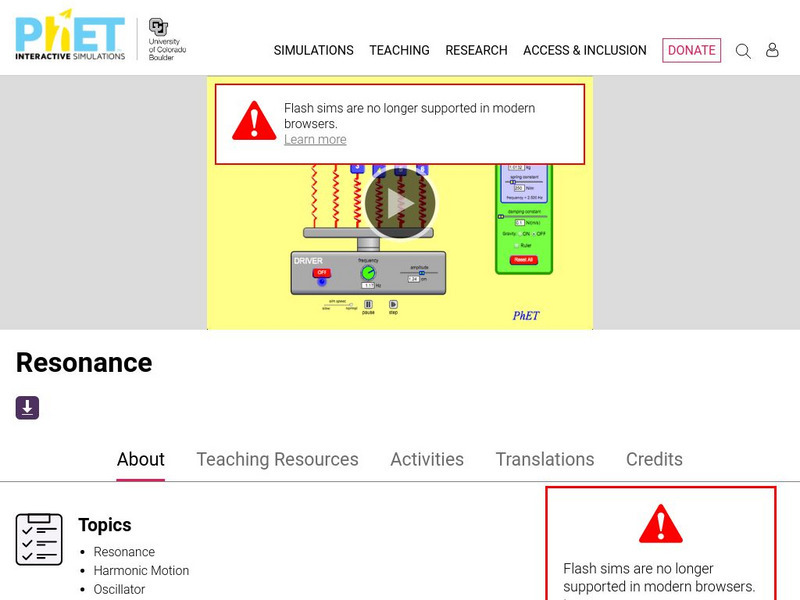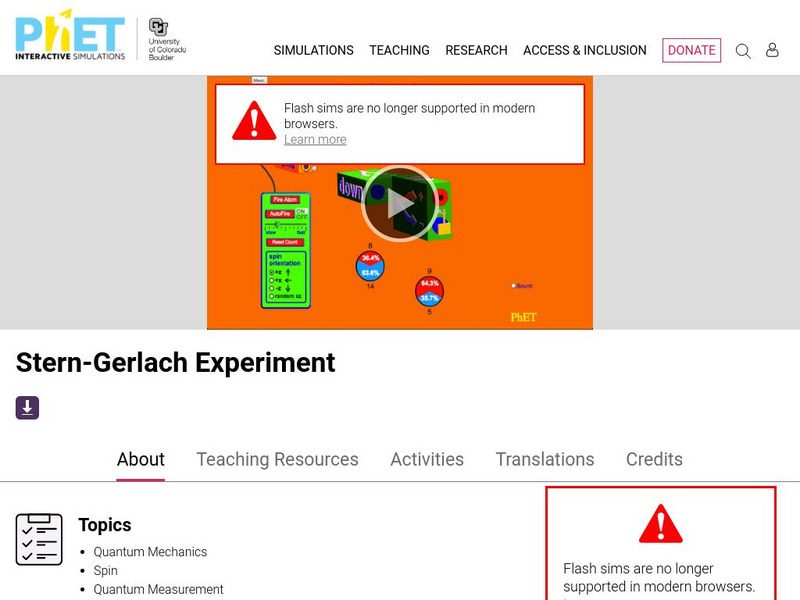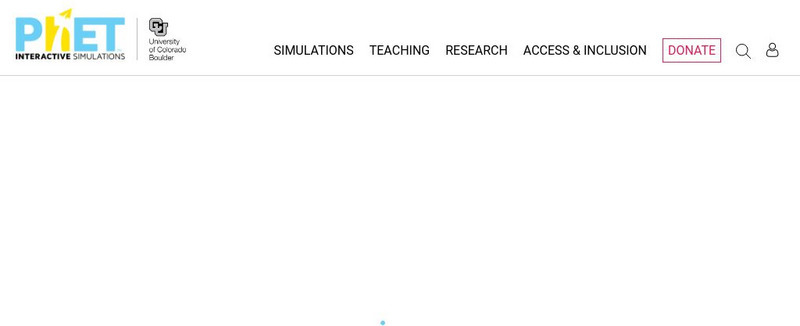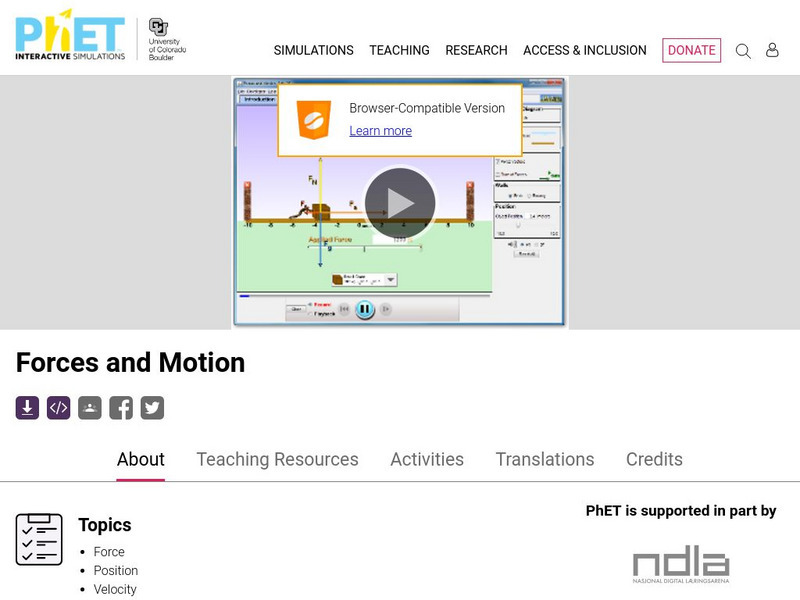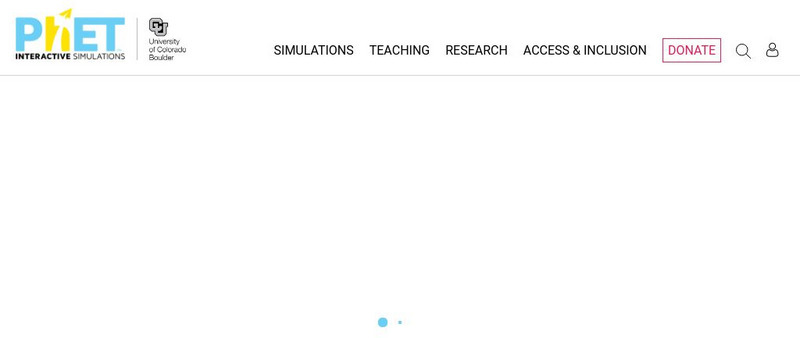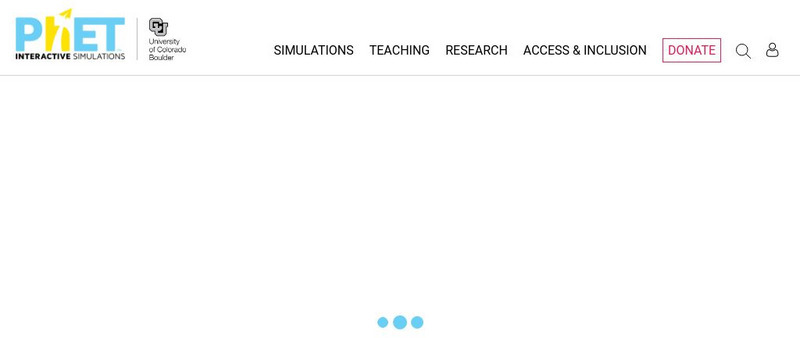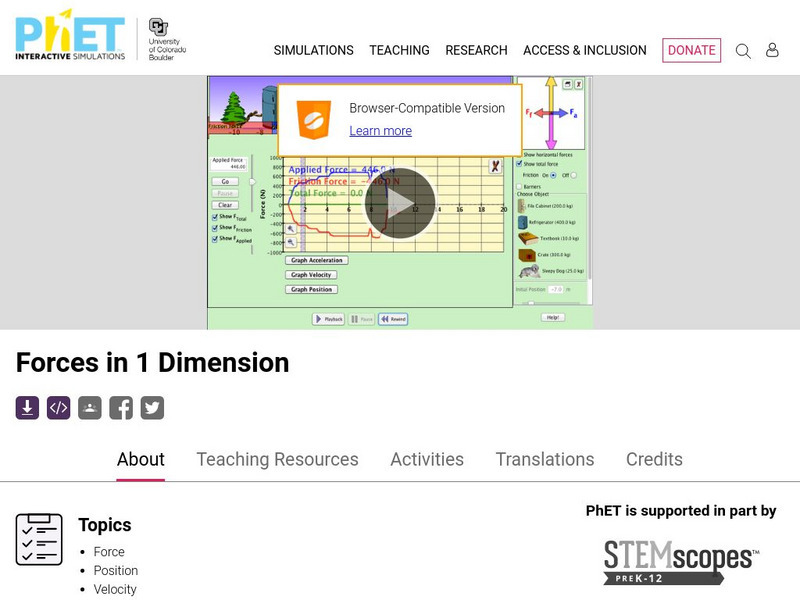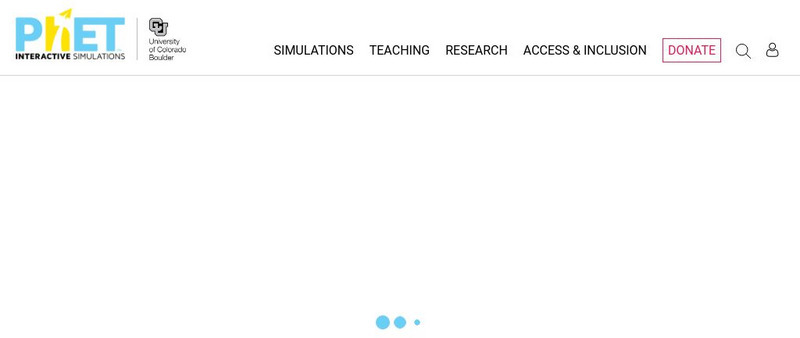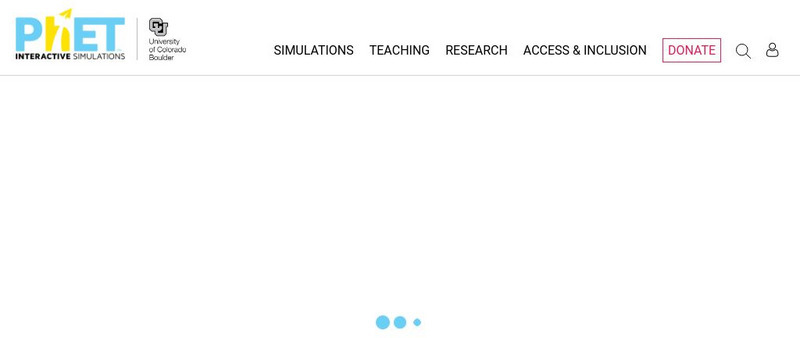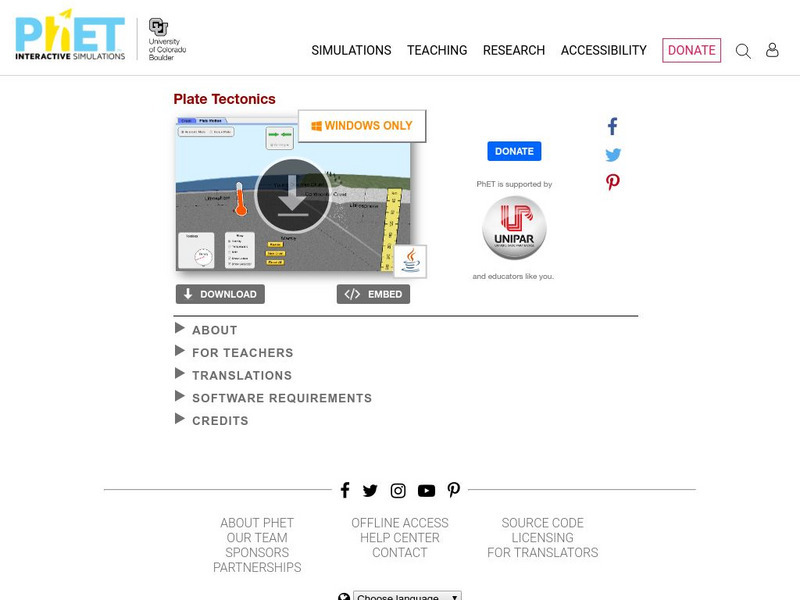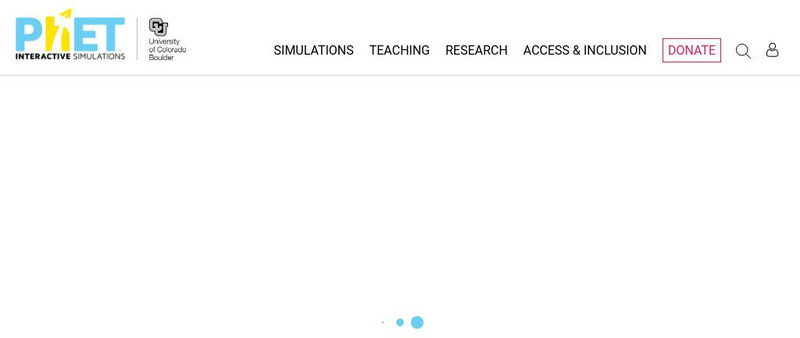University of Colorado
University of Colorado: Ph Et Interactive Simulations: Resonance
An interactive simulation that teaches about resonance, harmonic motion, and oscillator by observing varying frequencies and amplitudes, damping constants, and the mass and spring constant to determine the effect on resonance. This...
University of Colorado
University of Colorado: Ph Et Interactive Simulations: Stern Gerlach Experiment
An interactive simulation that teaches about quantum mechanics, spin, and quantum measurement through a classic Stern-Gerlach Experiment. By observing the spin of atoms as an intrinsic angular momentum, students learn to measure to reach...
University of Colorado
University of Colorado: Ph Et Interactive Simulations: Under Pressure
An interactive simulation that teaches about pressure, fluids, and density by observing changes in pressure under and above water with changes in variables including fluids, gravity, container shapes, and volume. This simulation can...
University of Colorado
University of Colorado: Ph Et Interactive Simulations: Unit Rates
An interactive simulation that teaches about ratios, proportional reasoning, and using double number lines to look for patterns through interactions while shopping for fruits, vegetables, and candy and by comparing cars with different...
University of Colorado
University of Colorado: Ph Et Interactive Simulations: Wave on a String
An interactive simulation that teaches about waves, frequency, and amplitude by observing the waves and vibrations of a string while changing variables like distance, speed, fixed or unfixed ends, and more. This simulation can either be...
University of Colorado
University of Colorado: Ph Et Interactive Simulations: Forces and Motion
Explore the forces at work when you try to push a filing cabinet. Create an applied force and see the resulting friction force and total force acting on the cabinet. Charts show the forces, position, velocity, and acceleration vs. time.
University of Colorado
University of Colorado: Chaco Canyon: A Virtual Conference
The Anasazi ruins of the Chaco Canyon are profiled as well as the Native American civilization that flourished there.
University of Colorado
University of Colorado: Ph Et Interactive Simulations: Collision Lab
An interactive air hockey simulation that teaches about collisions, momentum, and velocity. This simulation can either be downloaded or played online and includes handouts, lesson plans, and additional materials.
University of Colorado
University of Colorado: Ph Et Interactive Simulations: Gravity Force Lab
An interactive simulation that teaches about gravitational force, Newton's Third Law, and force pairs by varying properties affect the gravitational force exerted between two objects. This simulation can either be downloaded or played...
University of Colorado
University of Colorado: Ph Et Interactive Simulations: Build a Fraction
Build fractions from shapes and numbers to earn stars in this fractions game or explore in the Fractions Lab.
University of Colorado
University of Colorado: Ph Et Interactive Simulations: Concentration
Learn how concentration, evaporation, and saturation affect the concentration of a solution.
University of Colorado
University of Colorado: Ph Et Interactive Simulations: Bending Light
Manipulate variables and measure angles as light is refracted in this interactive simulation.
University of Colorado
University of Colorado: Ph Et Interactive Simulations: Radioactive Dating Game
Explore various types of radiometric dating.
University of Colorado
University of Colorado: Ph Et Interactive Simulations: Energy Skate Park
Build tracks, ramps and jumps in a skate park to learn about energy.
University of Colorado
University of Colorado: Ph Et Interactive Simulations: Forces and Motion: Basics
See how forces affect various items that are pushed or pulled.
University of Colorado
University of Colorado: Ph Et Interactive Simulations: Forces in One Dimension
Use this simulation to see the results of applying a force to move an object. Analyze forces and friction using graphs.
University of Colorado
University of Colorado: Ph Et Interactive Simulations: Acid Base Solutions
Students learn about acids, bases, and pH levels as they interact with the various features of this simulation.
University of Colorado
University of Colorado: Ph Et Interactive Simulations: Graphing Lines
Explore the world of lines. Investigate the relationships between linear equations, slope, and graphs of lines.
University of Colorado
University of Colorado: Ph Et Interactive Simulations: Fraction Matcher
An interactive simulation that teaches about fractions, equivalent fractions, and mixed numbers through a game of matching shapes and numbers. This simulation can either be downloaded or played online and includes handouts, lesson plans,...
University of Colorado
University of Colorado: Ph Et Interactive Simulations: University of Colorado: Gas Properties
Pump gas molecules to a box and see what happens as the volume changes, add or remove heat, change gravity, and more. Measure the temperature and pressure, and discover how the properties of the gas vary in relation to each other....
University of Colorado
University of Colorado: Ph Et Interactive Simulations: Plate Tectonics
Windows only - Interact with the tectonic plates of the Earth and see how changing variables affects the plates.
University of Colorado
University of Colorado: Ph Et Interactive Simulations: Estimation
Explore size estimation in one, two and three dimensions! Multiple levels of difficulty allow for progressive skill improvement.
University of Colorado
University of Colorado: Ph Et Interactive Simulations: Fractions Intro
Create your own fractions using fun interactive objects. Match shapes and numbers to earn stars in the fractions games. Challenge yourself on any level you like. Try to collect lots of stars!
University of Colorado
University of Colorado: Ph Et Interactive Simulations: Acid Base Solutions
How do strong and weak acids differ? Use lab tools on your computer to find out! Dip the paper or the probe into solution to measure the pH, or put in the electrodes to measure the conductivity. Then see how concentration and strength...
